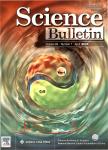A novel coupling configuration for thermoacoustically-driven pulse tube coolers: Acoustic amplifier
A novel coupling configuration for thermoacoustically-driven pulse tube coolers: Acoustic amplifier作者机构:Technical Institute of Physics and Chemistry Chinese Academy of SciencesBeijing 100080 China Graduate School of Chinese Academy of Sciences Beijing 100039 China
出 版 物:《Chinese Science Bulletin》 (CHINESE SCIENCE BULLETIN)
年 卷 期:2005年第50卷第18期
页 面:2112-2114页
核心收录:
学科分类:080902[工学-电路与系统] 0809[工学-电子科学与技术(可授工学、理学学位)] 08[工学]
基 金:supported by the Chinese Academy of Sciences(Project Number:KJCX2-SW-W12-l)
摘 要:Thermoacoustically-driven pulse tube cooler can provide cryogenic cooling power with no moving com-ponents. Up to now, pulse tube cooler is directly coupled with the thermoacoustic engine and obtainable pressure ratio for the pulse tube cooler is limited by the capability of the ther-moacoustic engine. The authors propose here the concept of acoustic amplifier, which is actually a long tube connecting the engine with the pulse tube cooler. Theoretical calculation shows that suitable length and diameter of the tube can lead to a pressure wave amplification effect which means that pressure wave amplitude coming from the thermoacoustic engine can be much amplified to drive the pulse tube cooler. Based on this, a 2.8 m long copper tube with 8 mm inner diameter is used as the acoustic amplifier in experiments. The experimental results show that due to the amplification effect, pressure wave amplitude at the inlet of the pulse tube cooler is over 2.5 times of that at the engine outlet. Typically, with 1.67 kW heating power, the pressure ratio provided by the engine is 1.11 while at the inlet of the pulse tube cooler the pressure ratio is 1.32, which leads to a lowest no-load temperature of 65.7 K.



